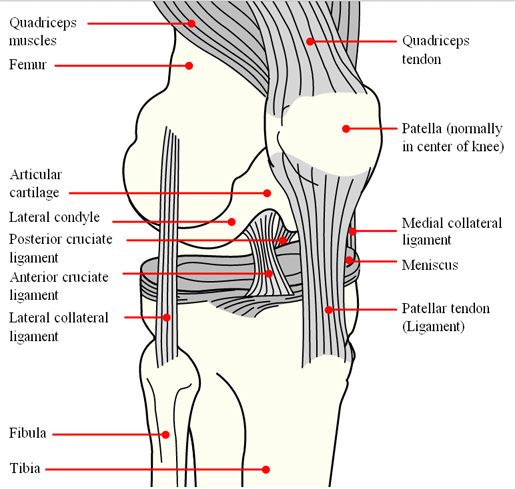Patellofemoral pain, also referred to as “runners knee”, describes pain in the front of the knee in the area around or beneath the patella. It is a relatively common complaint among runners, jumpers, skiers, cyclists, soccer players and others who put heavy stress on their knees.
The pain is usually a dull, aching sensation under or around the front of the kneecap (patella) where it connects with the lower end of the thighbone (femur). Pain usually worsens when walking up or down stairs, kneeling, squatting, and sitting with a bent knee for a long period of time.
Cause of Patellofemoral Pain
A number of factors can lead to the development of patellofemoral pain. It is most commonly due to a poor alignment of the kneecap so that it moves improperly over the knee. This may be the result of injury, tightness or weakness of thigh or hip muscles, inadequate stretching, or flat feet.
Patellofemoral pain in runners is usually due to the kneecap being out of alignment. If so, vigorous activities can cause excessive stress and wear on the cartilage of the kneecap. This can lead to irritation and breakdown of the cartilage on the patella called “chondromalacia”.
Treatment of Patellofemoral Pain
The recommended treatment depends upon the underlying problem causing the knee pain.
The first step is to STOP any activity that causes knee pain to prevent further damage to the cartilage. This may require stopping any running or jumping, and finding alternative forms of exercise during recovery, such as swimming.
RICE formula
- Rest. Avoid putting weight on the painful knee. Some athletes temporarily switch to a non-weight-bearing activity.
- Ice. Apply cold packs or ice wrapped in a towel for short periods of time, several times a day.
- Compression. Use an elastic bandage such as a simple knee sleeve with the kneecap cut out that fits snugly without causing pain.
- Elevation. Keep the knee raised up higher than your heart.
Take NSAIDs (nonsteroidal anti-inflammatory medications), such as ibuprofen, if you need more pain relief.
If your knee does not improve with rest, see your doctor for a complete medical evaluation and diagnosis. Runner's knee usually gets better with early treatment and reconditioning.
Nonsurgical Treatment Options
After the pain and swelling fade, reconditioning of the knee may be required to gain full range of motion, strength, power, endurance, speed, agility, and coordination.
Your doctor may recommend one or more of the following:
- exercise program to normalize the flexibility and strength of thigh muscles
- cross-training exercise, particularly of the hips and thighs.
- taping the kneecap or using a special brace for knee support during sports participation
- orthotics may sometimes be prescribed if there is a problem with the foot arch or alignment.
Your doctor will tell you when you may gradually resume running and other athletic activities.
Additional Treatment Options
Additional steps may be recommended for advanced cases that do not respond to nonsurgical approaches. These include:
- Arthroscopy. An arthroscope is inserted into the knee to remove fragments of damaged kneecap cartilage.
- Realignment Surgery. The knee is opened and the kneecap is realigned. This reduces the abnormal pressure on cartilage and supporting structures around the front of the knee.
Prevention of Patellofemoral Pain
- Stay fit. Good general conditioning prevents patellofemoral pain by maintaining muscle strenghth and flexibility for proper knee alignment
- Maintain a healthy weight. If overweight, weight loss may be necessary to prevent knee damage when running.
- Stretching. Warm up for at least 5-minute before exercising in a way that stresses the knee (running, tennis, skiing..etc) Stretch following exercise. Stretching, particularly in the face down position (prone). For example, when lying prone, grab the ankle of the affected leg with one hand, and gently stretch the front of the knee.
- Gradually increase exercise intensity and duration. Avoid sudden changes in the intensity or duration of exercise.
- Use proper running gear. Be sure that running shoes fit properly and offer good shock absorption. Shoe inserts may be helpful for those with flat feet.
- Run with proper form. Lean forward and keep the knees bent. Avoid running straight down a steep hill which can put extreme stress on the knee.
Source: National Institute of Arthritis and Musculoskeletal and Skin Diseases
Last updated : 12/1/2022